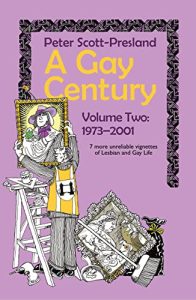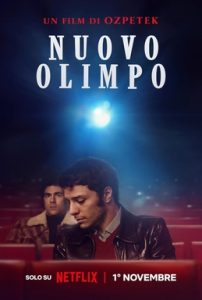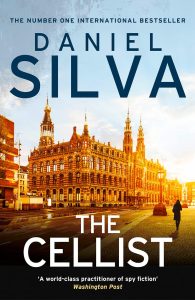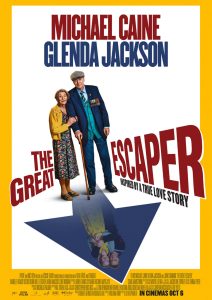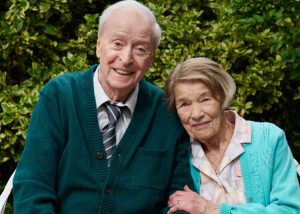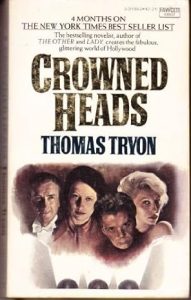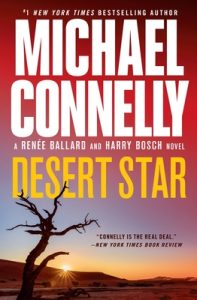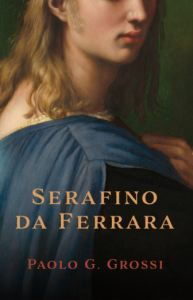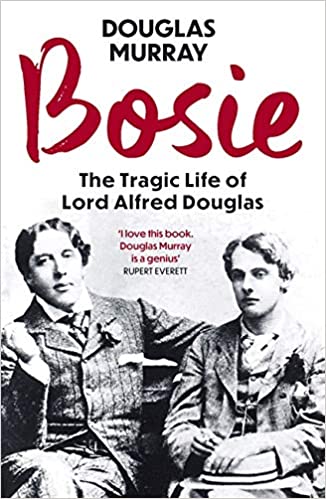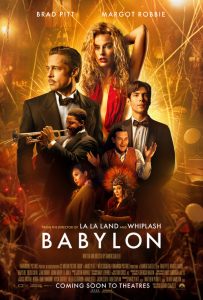What I’m reading: the changing lives of gay men and women
Peter Scott-Presland: A GAY CENTURY Volume Two
The second volume of Peter Scott-Presland’s short plays chronicling the lives of gay men and woman through the twentieth century takes us from the 1970s to the millennium – three decades which saw huge changes to laws and attitudes in the UK and most of the world. Section 28 is revisited, and the legislation to legitimize same-sex partnerships and marriage and gay parenting.
In an ironic twist on the grim reality of the Aids pandemic, ‘Quarantine’ imagines that Health Secretary Norman Fowler was empowered to intern anyone with (or even suspected of having) HIV in prison camps on the Isle of Man. Comedy with a dark edge.
These playlets are written to be spoken or sung. As operettas they would be in the style of Brecht rather than Puccini; there are no soaring arias and the language is everyday. The opening chapter in Volume One, with Queen Victoria visiting Oscar Wilde on his deathbed in a Paris fleapit hotel and pirating lines from his plays, remains my personal favourite, as fruity as a Christmas cake, not quite equalled by anything in Volume Two. Victoria and Oscar, with others from the series, make ghostly cameo appearances in the seventeenth and final play, ‘Two Into One’, which has Ken Livingstone among the supporters of two old queens – make that two ancient queens – on their wedding day, a pair as dated and waspish as Derek Jacobi and Ian McKellen in ITV’s weirdly old-fashioned sitcom Vicious.
A Gay Century is an imaginative triumph. Bravissimo, Peter Scott-Presland!
Who inspired soap diva Tawdra Thanatos?
Bonham Carter gives a fruity performance as Crossroads diva Noele Gordon. But which star of which Soap do you think inspired Tawdra Thanatos, the uber-bitch queen of Eldorado, the Florida-based soap in my novel SOAP-STUD & BLUE-MOVIE GIRL?
Read Extracts from the novel by clicking on the links. And post your “theories” about Tawdra in Comments!
What I’m watching: Intense gay Italian drama – Brokeback intense
NUOVO OLIMPO
(Netflix)
Netflix has become a notable stable for LGBT-themed movies and TV series. Nuovo Olimpo is the latest, a one-off Italian feature centred on the aborted romance between Enea (Damiano Gavino), a young film director, and Pietro (Andrea Di Luigi) an ophthalmologist new to the gay scene. They meet in the Nuovo Olimpo fleapit cinema in the 1970s, a notorious gay cruising ground that is Rome’s equivalent of London’s Biograph cinema (aka “the Bio-grope”). A passionate affair is cut short when the cinema is invaded during an anti-fascist demonstration and they lose contact.
Ten years later Enea has made a movie about their brief fling, and a re-encounter is narrowly missed. More years pass: Ennea has a doting husband and Pietro a wife who is sensitive to the gap in his life. An accident on a film set brings the two men together in the eye hospital and offers the opportunity to relight the flame between them. A “will they/won’t they” moment gives the movie a soap-opera climax.
The intensity of the early sex scenes is more than a little reminiscent of Brokeback Mountain (as in other Netflix productions full-frontal nudity takes the movie to the vertiginous edge of lite porn). The story also has faint echoes of Theorem, Pasolini’s pansexual odyssey which seemed extremely bold and weird in 1968 and might still seem pretty far out in 2023.
Nuovo Olimpo isn’t weird but it is a full-on exploration of gay and bisexual love, written and directed with a rare sensitivity by Ferzan Ozpetek and beautifully played by the two handsome leads. This is a must-see drama whose appeal, very much like Brokeback Mountain, extends far beyond the gay audience.
What I’m reading: Corruption in the Kremlin – and elsewhere
DANIEL SILVA: The Cellist
This is the 2021 “operation”, which I somehow missed, featuring Gabriel Allon, the art restorer and former assassin who is now the head of Israel’s secret intelligence outfit – “The Office”, as it’s known.
The target this time is Arkady Akimov, a Russian oligarch who manages the investment of the billions of dollars that flow into the coffers of the country’s corrupt and tyrannical president, whom some people call “the Czar”.
To bring down Akimov, Gabriel recruits Isabel Brenner, a young German banker who has recently whistle-blown the machinations of a bank deeply involved in money laundering and sanction-busting activities. Isabel also happens to be an accomplished cellist – hence the book’s title. Akimov has an eye for a pretty face, and Gabriel hopes to infiltrate Isabel into the management of the oligarch’s funds and bring him down, together with his boss in the Kremlin. “The Russian president is not a statesman, Isabel,” Gabriel tells her. “He is the godfather of a nuclear-armed gangster regime.”
No prizes for guessing who the gangster president is, nor his opposite number in Washington who is contesting the result of the election that has removed him from office even as the novel’s events are unfolding. In the text Daniel Silva doesn’t name either of these presidents, although the Russian is referred to sometimes as Vladimir Vladimirovich or Volodya, Putin’s patronymic and his pet name (if we can imagine Putin being anybody’s pet).
This is arguably Daniel Silva’s most important novel to date. In a lengthy Author’s Note at the end of the book he re-examines some of the “evidence” for Putin having interfered in the election that brought Trump to power; he also suggests that there were undocumented meetings between the two men during Donald’s time in the White House.
The politics and financial chicanery that make up most of The Cellist make for an occasionally stodgy read. The one high-octane scene, a chase in the French Alps, is too much like an outtake from a Bond movie. This is a book which, like many of John Le Carré’s novels, clearly draws on the author’s concern about the great issues of the times we live in. A fictitious story of corruption in the Kremlin and the White House is based on the belief that there is or has been corruption in these seats of power.
David at the movies: Goodbye to a magnificent actress
The Great Escaper
This is mainly going to be remembered as Glenda Jackson’s last movie, and what a glorious swansong it is. Her ancient, heavily lined face – far removed from the face of Elizabeth the First, the role that sealed her stardom in 1971 – conveys shades of emotion that not all actresses can hint at. She’s playing Irene Jordan, the wife of Bernard (Michael Caine) who has gone AWOL from the care home in which they live, taking himself off to Normandy to attend the 70th anniversary commemoration of the D-Day landings.
This is another of those small movies with a big heart. Nothing very dramatic happens (apart from brief flashbacks to D-Day which Bernard’s best pal did not survive). John Standing has a nice supporting role as another veteran who takes Bernard under his wing; there was a hint of camp in Standing’s performance, which made me think an LGBT ‘attitude’ moment could and should have been shoe-horned in.
Michael Caine has weathered the years better than Jackson (or he’s had some work done, which Glenda very clearly has not). His performance is not quite as subtle as hers, but this is a beguiling and totally believable reconstruction of an episode which made the papers back in 2014. A couple who have loved each other for seventy years are two people you have to take your heart.
* * * * * * * *
RIP Glenda, one of the finest actresses Britain ever produced. And Happy Retirement to Sir Michael, who has given us a great deal of pleasure in a long and splendidly wide-ranging screen career
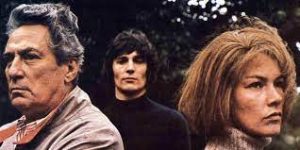
What I’m reading: The book that inspired my latest novel
Thomas Tryon: CROWNED HEADS
Crowned Heads, which dates from the 1970s, was one of the major inspirations for my own Hollywood novels Soap Stud & Blue-Movie Girl (published this year under my other pen-name David Godolphin) and Howl and the Pussy-Kat (still editing with a view to publishing next year). Re-reading Crowned Heads after forty-plus years, it’s still one of the great Tinseltown tales, if perhaps not as exquisite as I remembered it.
Fedora, the first of four linked novella-length stories, is the best and was memorably filmed by Billy Wilder (his last movie in 1978). Fedora is a Garboesque Hollywood legend who comes back from a period of seclusion more beautiful – and a better actress – than before. The explanation, narrated to an interviewer like one of Anne Rice’s vampire sagas, is a bit too slow.
Lorna is Lorna Doone (that name is unforgivable!) is a burnt-out star whose life falls into a haze of booze and sex on holiday in a second-rate hotel in a third-rate resort in Mexico. Lots of candidates for the inspiration here whom it would be ungentlemanly to name – she may be an “amalgam”. This too takes a long time to reach its gloomy climax.
Bobbitt is the former child-star forever trapped in the role he outgrew. Mickey Rooney and even Shirley Temple could be sources here. Repetition spoils this one.
Willie (another unfortunate name to an English ear) is Willie Marsh, an elderly movie legend, clearly inspired by Ramon Novarro, whose home, a shrine to his dead but still dominating mother, is invaded by a trio of creepy hippies. This takes Thomas Tryon back into the horror territory where he first made his mark as actor-turned-writer. The invasion scene is far too protracted and its inevitable conclusion goes way over the top.
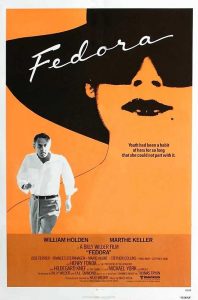
Four distinct tales, richly original and yet echoing true events in the life of Movieland. They constitute four ‘obituaries’ from Hollywood’s Golden Era. The writing is a long way from the brisk blunt prose of Jackie Collins and becomes over-ripe in parts, but this is quintessential Tinseltown: art imitating life imitating art. A must-read for La-La Land buffs if you’ve missed it; it’s on Kindle but the print edition is only available second-hand.
You can read the first chapters of David Godolphin’s Hollywood novellas Soap-Stud & Blue-Movie Girl on my website: www.davidgeebooks.com
Harry Bosch – nearly his last case
Michael Connelly: DESERT STAR
A new Harry Bosch crime story used to be an annual highlight. Now we have to share him with LAPD’s Renée Ballard and (not every year) Mickey Haller, “the Lincoln Lawyer”. In Desert Star Bosch and Ballard are given alternate chapters as they investigate two cold cases: a rape/murder from 1994 and the brutal killing of a whole family a year earlier, whose bodies were buried in the desert.
New forensic evidence from DNA plays a crucial role, but re-interviewing witnesses and suspects is the most effective way of digging slowly toward a resolution. Both cases bring Harry into deadly confrontations, and you may begin to think, as I did, that Michael Connelly is getting ready to kill off his hero, our hero.
Because Ian Fleming didn’t kill him off, James Bond’s life and career has been placed in the hands of other writers, some as gifted as Fleming, some woefully talentless. Peter O’Donnell sent Modesty Blaise and her sidekick Willie Garvin on a final, fatal mission: the best option in my view.
007 clearly perished – heroically, of course! – at the end of No Time to Die. It will be interesting to see how the writers manage to resurrect him in the next movie, after they resolve the increasingly tiresome saga of naming Daniel Craig’s successor. Chrisopher Lee’s Dracula had almost as many lives as a cat; his ashes were easily reassembled (fully dressed, every time!). James Bond is clearly hallmarked for immortality.
We must perhaps brace ourselves for the death of Harry Bosch within the next book or two. Desert Star is not one of Connelly’s best tales, the pace is a bit slow and Ballard fails to come to life on the page in the way that Bosch always does, but the story has two thrilling climaxes and Harry Bosch reaffirms his status as the most believable of all investigators.
What I’m reading: Erotic tales across the centuries
Paolo G. Grossi: SEARAFINO DA FERRARA
In Renaissance Ferrara, young Serafino is talent-spotted as a promising artist and apprenticed to a series of high-profile painters, culminating in Michelangelo, who has been commissioned to paint a chapel ceiling for the Pope. Michelangelo, like other artists and apprentices, is jealous of Fino and abuses him. A new patron rescues him, and his love life acquires a new intensity.
500 years later, Parker Henderson, teenage son of the newly appointed American consul in Florence, falls intensely in love with a boy in his school class and uncovers a link to the sixteenth-century painter, whose home is now the consul’s residence.
Paolo Grossi’s first full-length novel is an easy, lightly erotic read. Stories written in the present tense tend to raise my hackles, and the author’s prose style here lacks the refinement that hallmarked his previous collection of Berlin stories. I would have liked a stronger contrast between the Renaissance scenes and the modern ones; the period dialogue needed to be a bit more archaic.
There’s a brief scene when the consul’s son is subjected to the attentions of an ageing celebrity painter, and the tone of the book changes subtly. I would have welcomed more of this, but the passionate encounters of teenage lovers across the centuries plainly have a stronger appeal to today’s readers.
What I’m reading: Lord Alfred – Oscar Wilde’s toyboy and nemesis
Douglas Murray: BOSIE
This detailed and thoroughly researched biography of Lord Alfred Douglas was published over twenty years ago, so mine is a rather late review. Bosie here comes across as a bitter, vindictive man torn between love and hate for Oscar Wilde, whose downfall was brought about as much by Bosie and his father as by his own love of life in the gutter (from where, as we know, there is a view of the stars).
The young Bosie has been accurately portrayed in all the movies: lazy, spoiled and petulant. He graduated from college flirtations to commercial sex with London rent-boys (then called ‘renters’). Wilde was going to seed by the time they met; Bosie’s infatuation was more for the playwright and wit than for the bedroom partner. But he loyally visited Oscar every day while he was awaiting trial for sexual offences after the collapse of his libel case against Bosie’s father, the Marquess of Queensberry.
Breaking an oath to his wife that he would not see Bosie again, Wilde was reunited with him in Rouen after his release from prison. They lived for some months in a rented villa near Naples where Oscar wrote ‘The Ballad of Reading Gaol’, his last work, and Bosie wrote some of his best poems. The pair were forced to separate when first Mrs Wilde (reverting to her maiden name Constance Holland) and then Bosie’s mother withdrew their financial support.
Bosie did not see Wilde during his last days in Paris in 1900, but he paid for Oscar’s funeral. Less than two years later he married Olive, a fellow poet with (some say) lesbian leanings. They had a son who ended up in a mental hospital, and although the marriage failed they remained friends and confidants until Olive’s death in Hove in 1944 (Bosie died, also in Sussex, a year later).
Douglas Murray believes Bosie ‘went straight’ after he converted to Catholicism and married Olive. But he never could not let go of the past. He wrote several books about his relationship with Wilde and got involved in a long series of libel cases, many centred on Robert Ross, Oscar’s ‘ex’ from way back who deserves much of the credit for safeguarding Wilde’s legacy, the plays. Bosie edited a series of short-lived literary magazines and ‘discovered’ some notable poets, including Siegfried Sassoon and Rupert Brooke. He took against the emerging modern poetry after the Great War and especially hated T.S. Eliot, never missing a chance to slag him off in letters to, among others, Bernard Shaw and Marie Stopes!
Murray’s major achievement is perhaps in arguing the case for Bosie to be recognized as a poet of some significance. Several critics of the time (and again when he was republished in the 1950s) rank Alfred Douglas’s sonnets alongside Shakespeare’s. How highly is he rated today? His early poems (many invocations to ‘the love that dare not speak its name’) are a bit twee. The middle ones are vituperative, reflecting his long period of litigiousness. Then sanctimony gets the better of him as he becomes an increasingly hardcore Catholic and denounces homosexuality.
This is not an easy book to read, especially for non-poetry lovers. Full of a queeny bitchiness and endlessly self-pitying, Alfred Douglas was neither lovable nor likeable. In death as in life, Bosie gets co-star status in the drama of the rise and fall of a great literary figure.
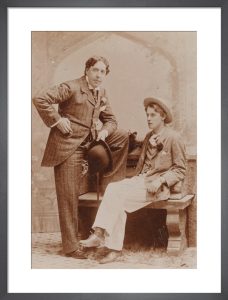
David at the Movies: I hated this
BABYLON
In the opening scene of Babylon an elephant on a pick-up empties its bowels over one of its handlers. This, I’m sorry to say, sets the tone for much of what follows. This is a long movie – three hours, much of which is crap.
Writer/director Damien Chazelle, who gave us La La Land a few years ago, turns the clock back to the 1920s when “Hollywoodland” was transitioning from silent pictures to sound. Brad Pitt and Margot Robbie play two leading actors who flounder during this period of adjustment, cast in a series of tawdry flops. Diego Calva and Jovan Adepo play a Mexican production assistant and a jazz trumpeter whose careers briefly flare. All four stars make the best of their roles despite the chaotic screenplay. Robbie’s damaged character, a stock favourite, fuelled by addiction to cocaine and gambling, is overdone and risks losing the viewer’s sympathy.
Orgiastic parties and a weird scene in a mountain torture palace presided over by Tobey Maguire in overdrive bring echoes of historic Babylon and some of the weirder extremes of early Hollywood. And there are many references to Singing in the Rain, that gem of a film set in the same era as this mash-up – one of the all-time greatest movies. With its messy script, erratic direction and uneven editing, Babylon is in an altogether different league. I can’t think of a picture I’ve hated as much as this. Sorry!
